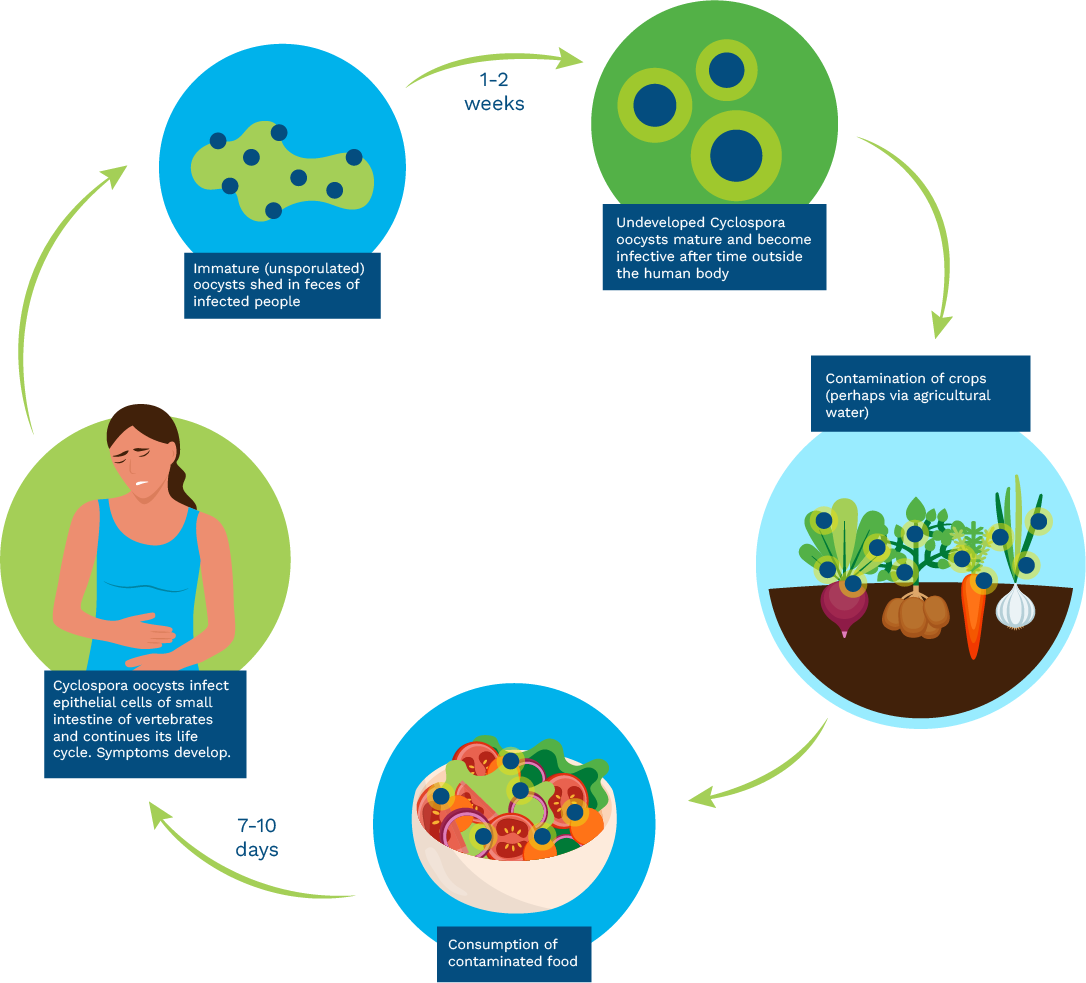definition
Parasites are organisms that derive nourishment and protection from other living organisms known as hosts. These living hosts may be animal or human, and as such, parasites may be transmitted from animals to humans, from humans to humans, or from humans to animals. These organisms live and reproduce within the tissues and organs of infected human and animal hosts and are often excreted in feces. Several parasites have emerged as significant causes of foodborne and waterborne illness.
| Protozoa | Helminthe | Ectoparasite | |
| Description | One-celled organisms 4 groups: – Sarcodina (amoeba) – Mastigophora (flagellates) – Ciliophora (ciliates) – Sporozoa (organisms with non-motile adult stage) | Multicellular organisms 3 groups: – Roundworms (nematodes) – Flatworms (platyhelminthes, including cestodes (tapeworms) and trematodes (flukes)) – Thorny-headed worms (acanthocephalins) | Organisms that live outside the host, typically on their external surface Examples: – Ticks – Fleas – Lice – Mites |
| Foodborne or waterborne parasites | Cryptosporidium Cyclospora Toxoplasma Giardia | Anisakis Trichinella Taenia Fasciola | None |
Parasites have complex life cycles, with some period of time spent within a host and some time spent outside of a host. When a parasite is infectious varies, and the infectious dose also varies or is poorly understood. As such, parasite transmission cycles can be complicated and present challenges with understanding and detecting them. As an example, the transmission cycle of Cyclospora is shown in the figure. [6]



